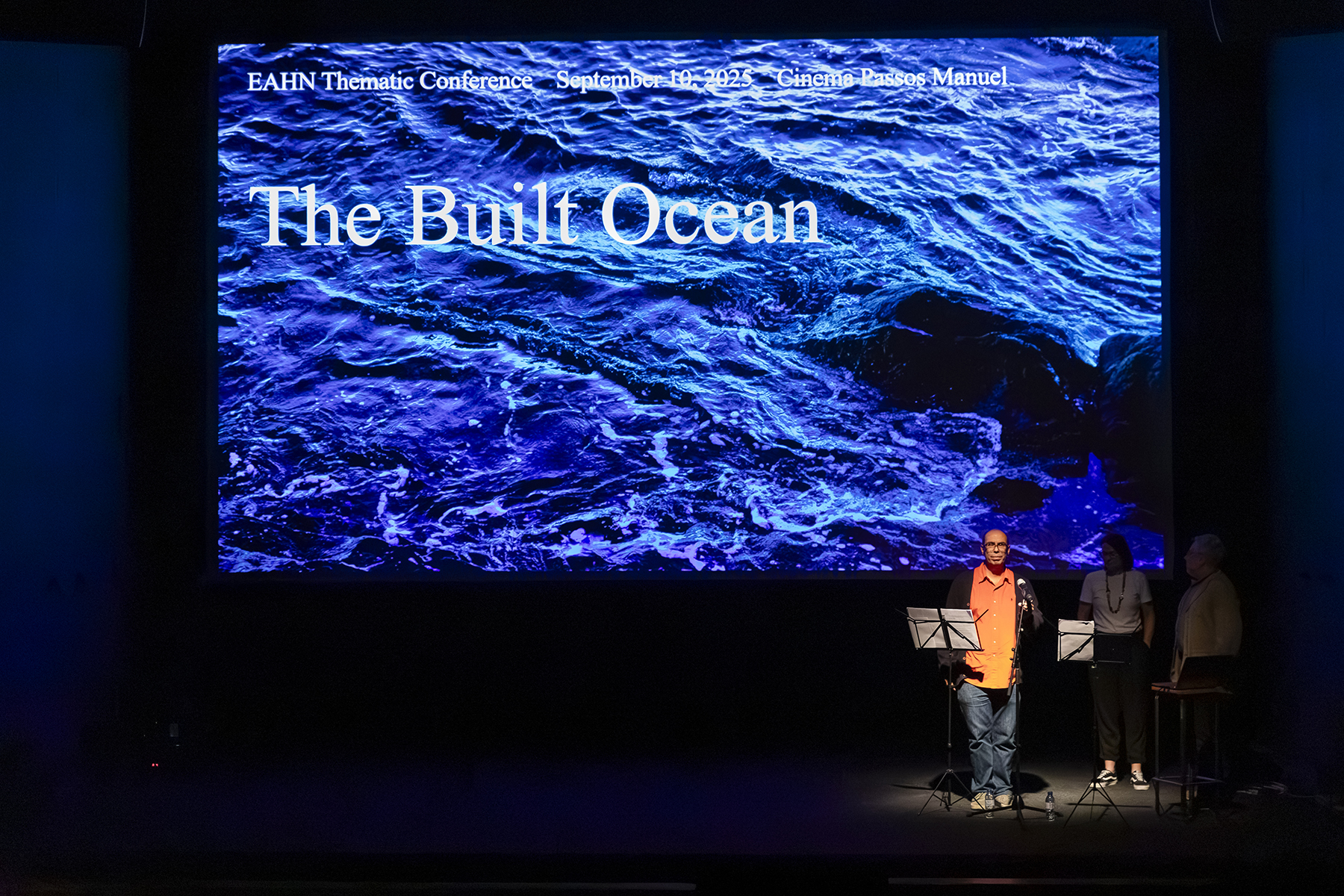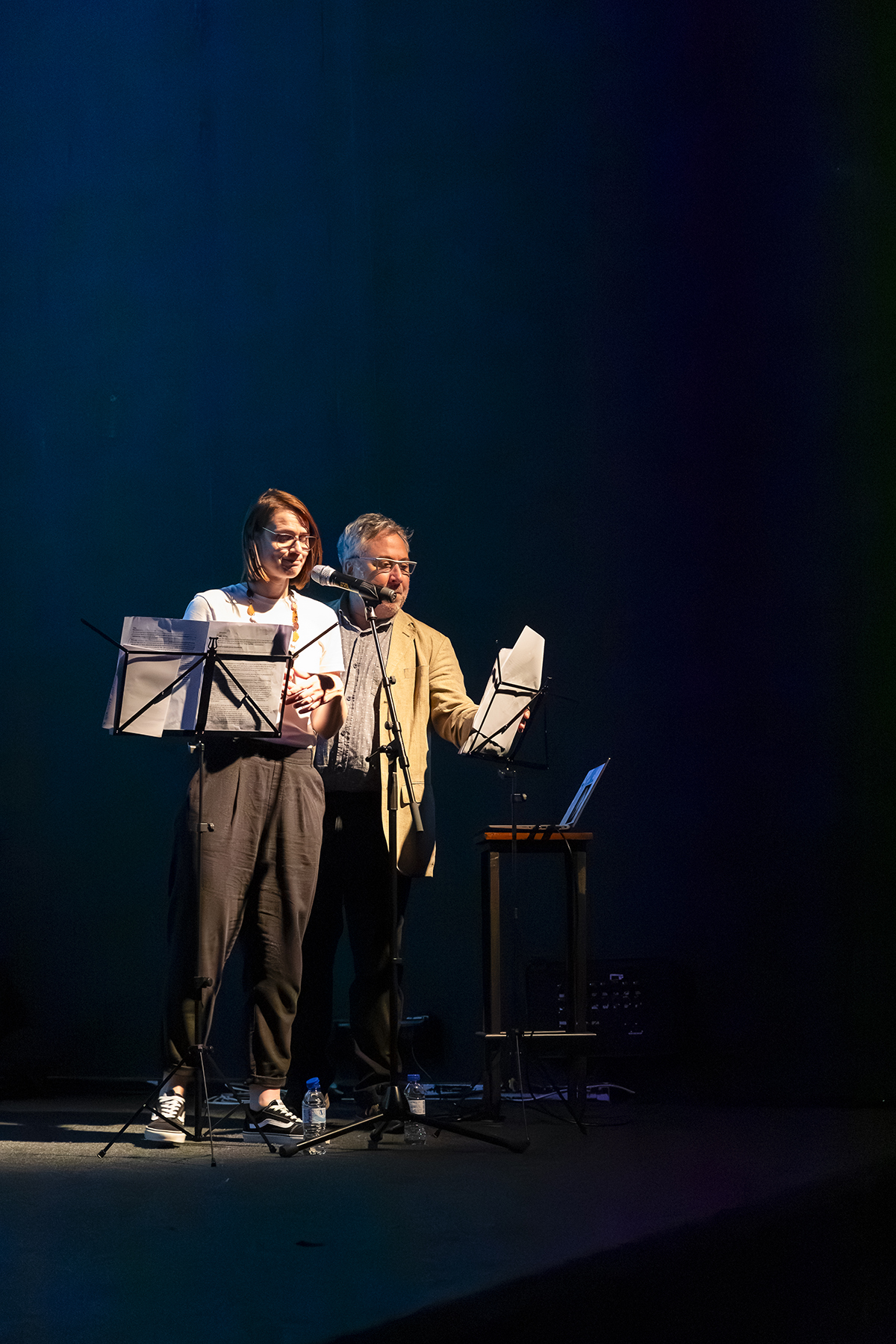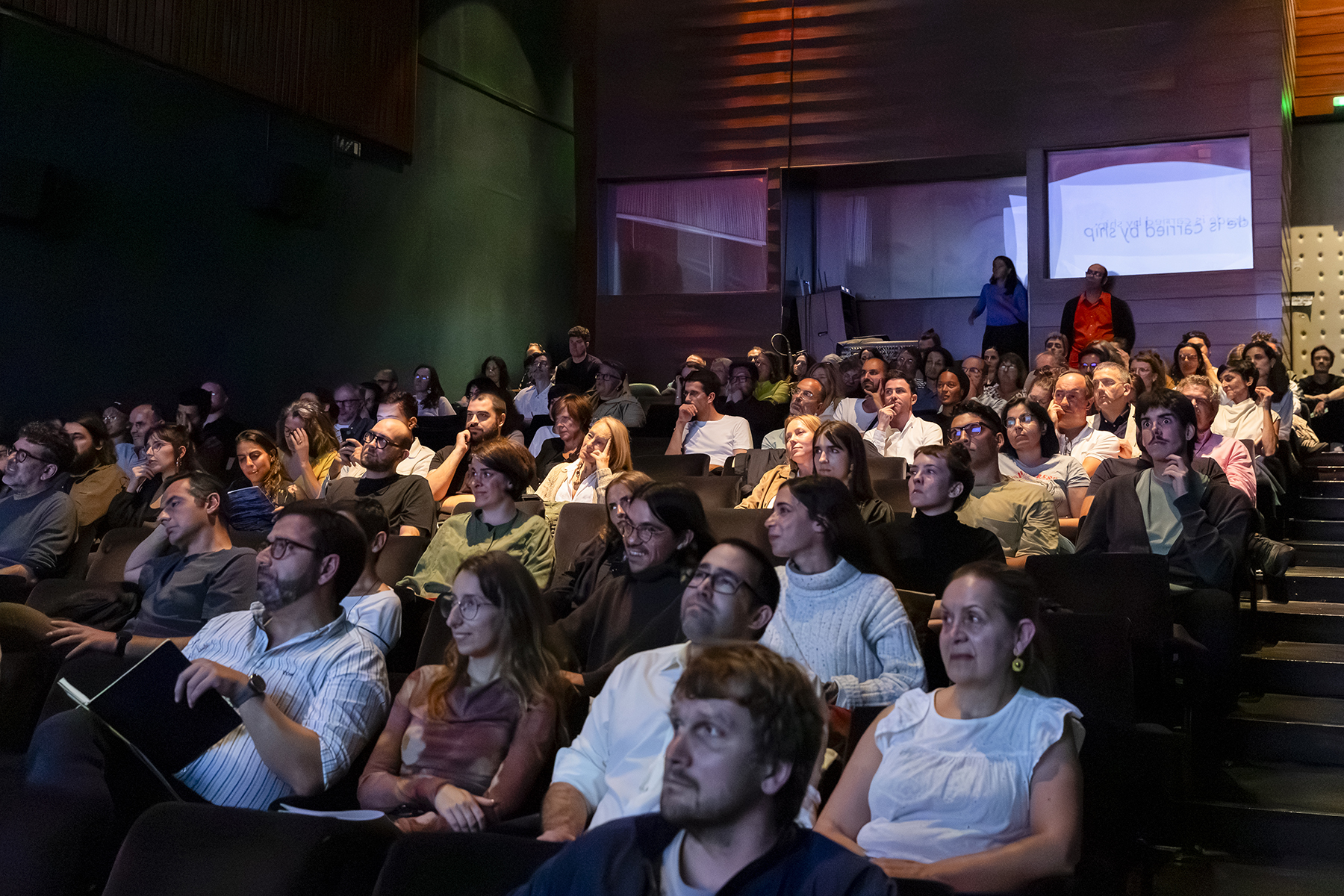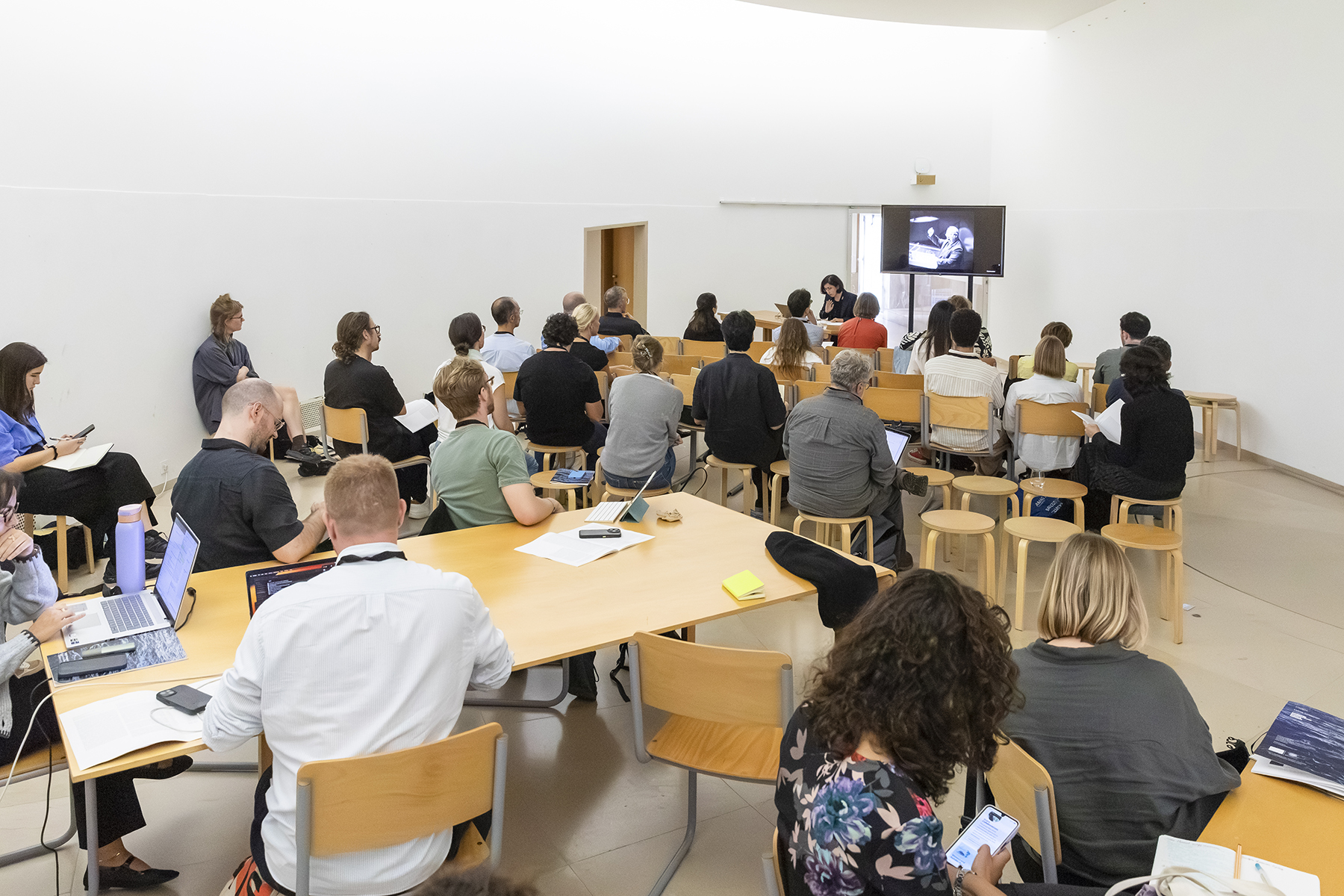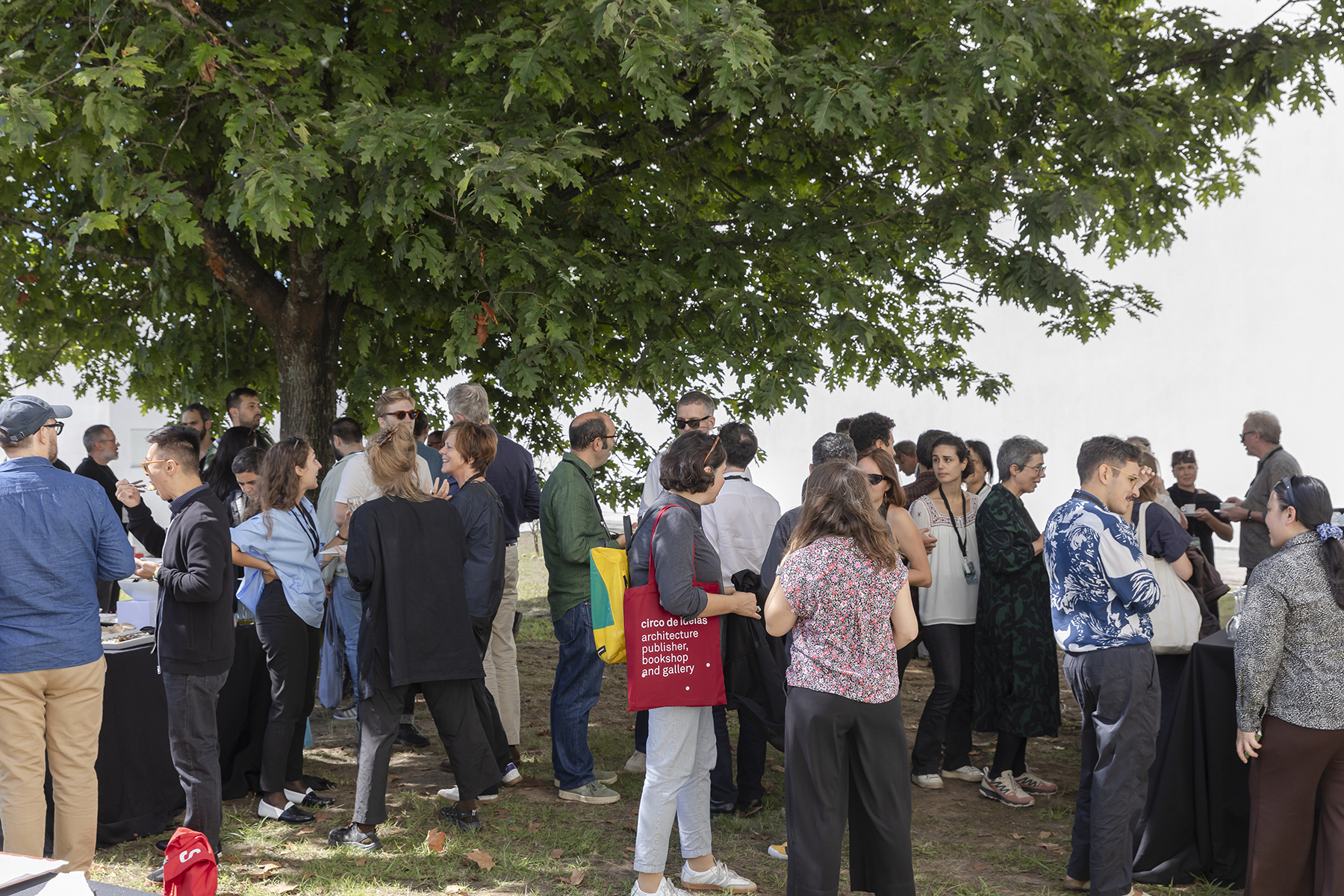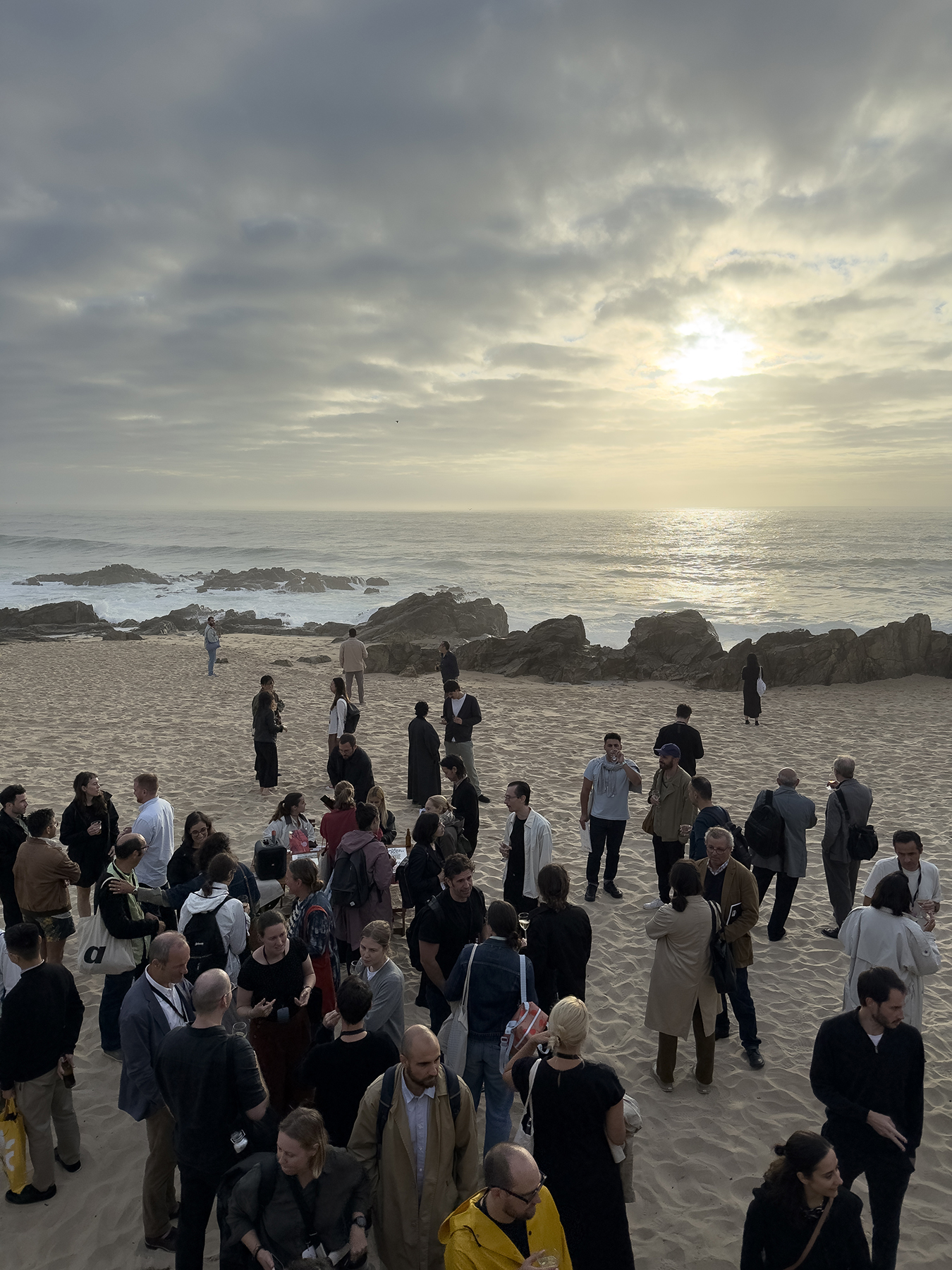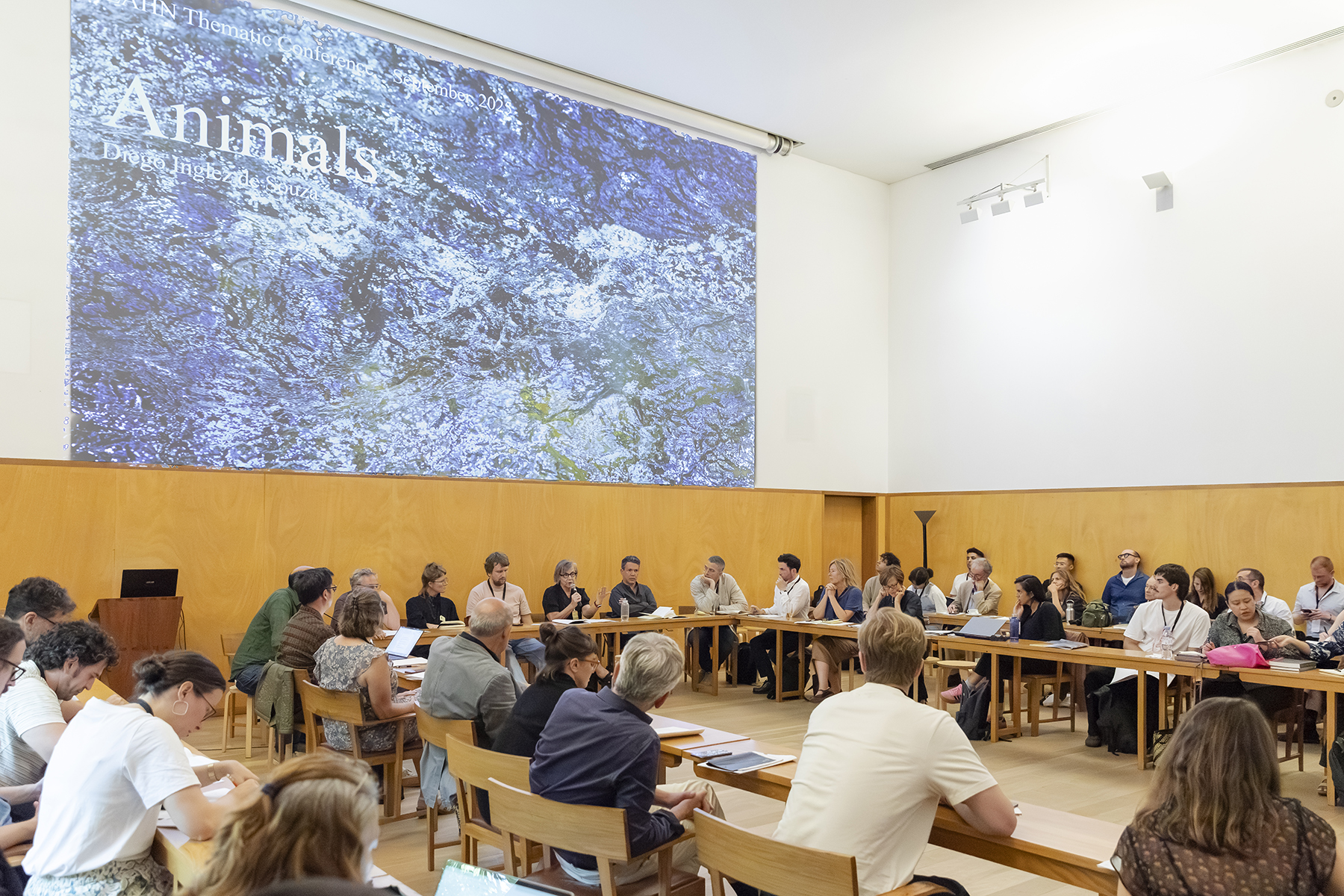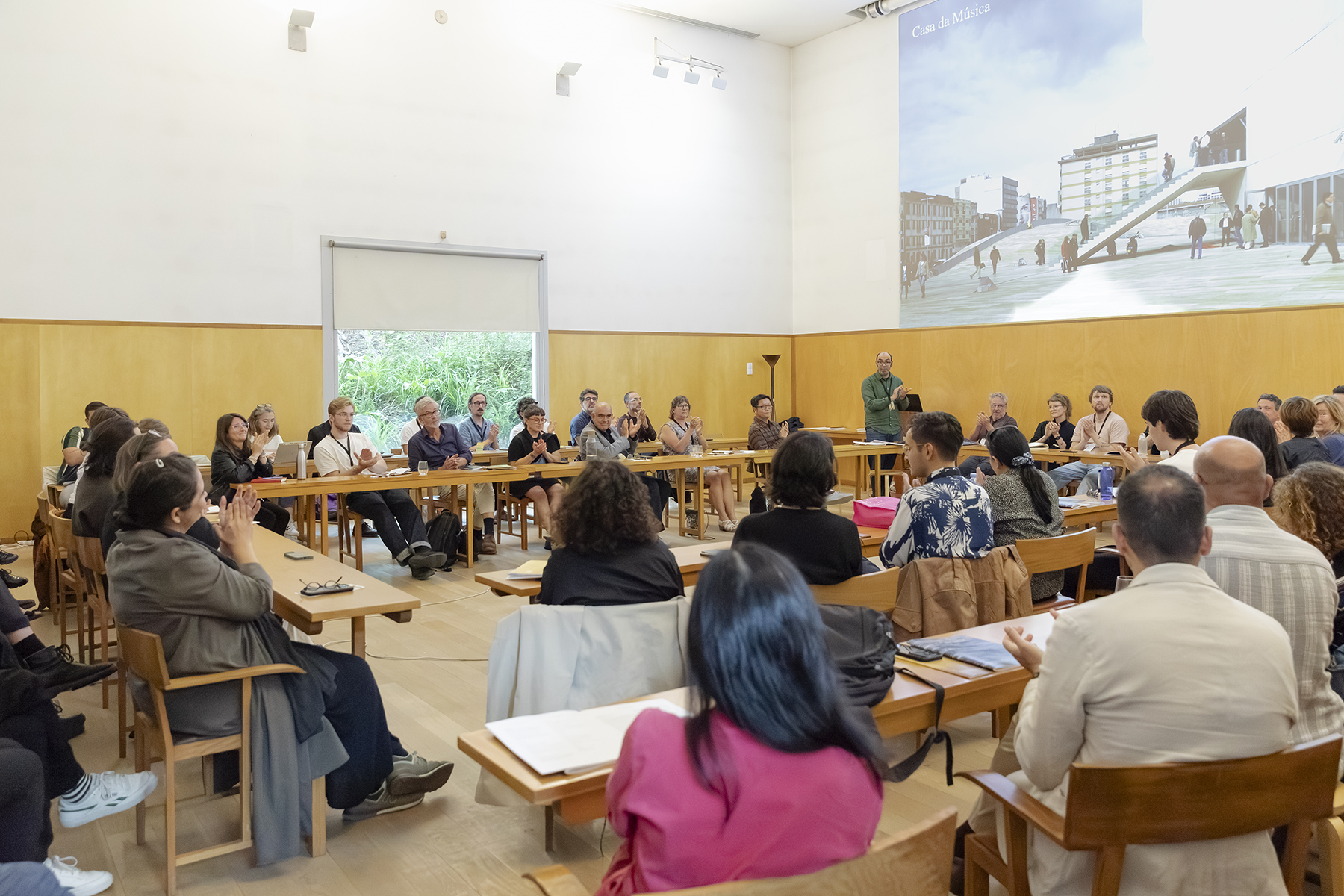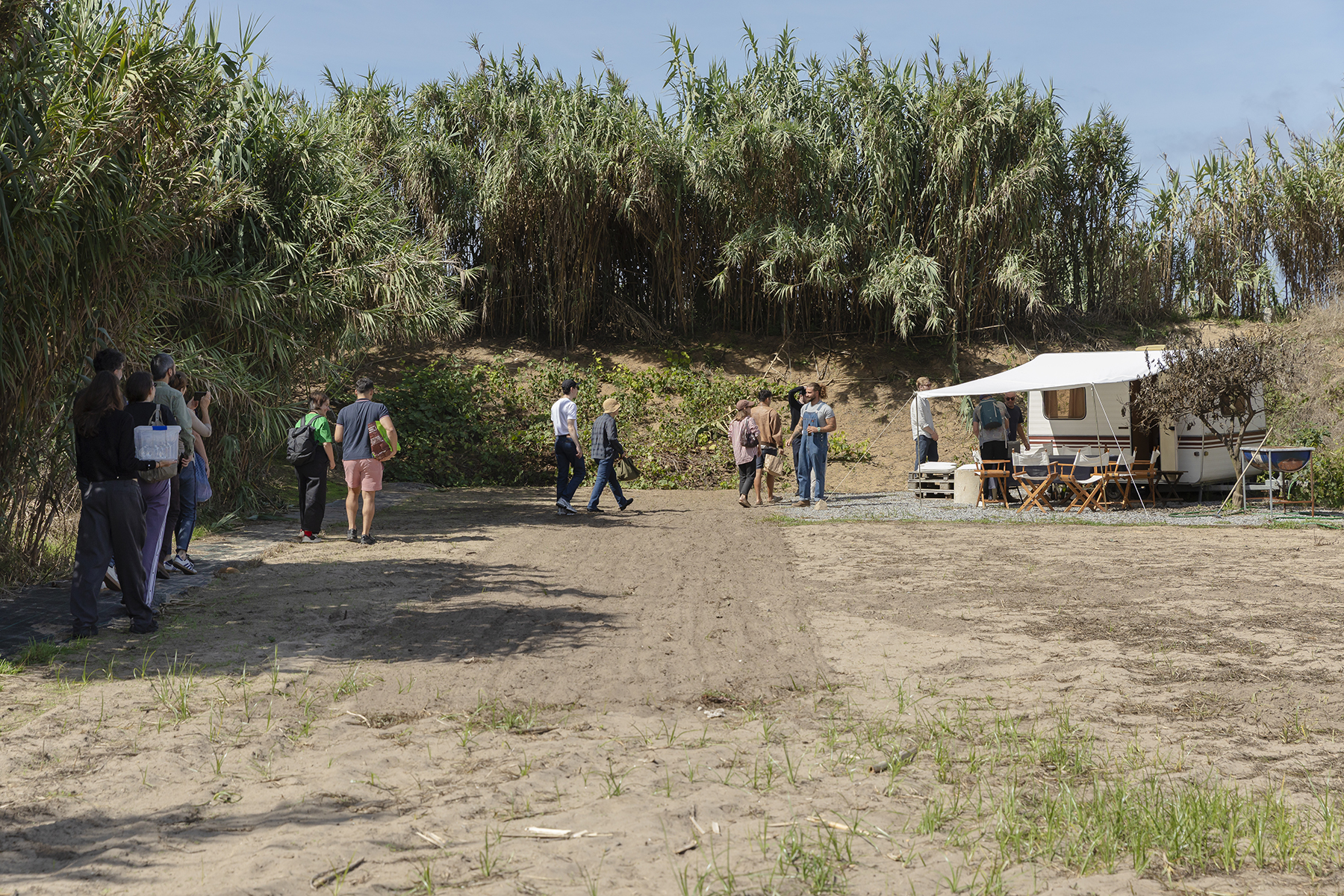After the Coffee Break
After the coffee break, people always find it difficult to move indoors away from the shade of the tree or the late summer sun. Yet, the ninety participants at the Built Ocean conference seemed happy to be returning to the rooms to hear about each other’s work and listen to ideas addressing a common challenge: How to tackle the architectural history of the planet’s bodies of salt water? Conferences are social events where knowledge is staged, old and new friends come together, fresh narratives circulate, and hypotheses beckon on the horizon. Porto’s EAHN thematic conference this early September was no exception—there was, indeed, a joyful atmosphere, nurtured by nightlife reminiscences, architectural masterpieces, acoustic hardships, blissful swims, and a sublime sunset. Something new was in the making.
The conference kicked off in the city centre, in Cinema Passos Manuel. The geographers Kimberley Peters and Phil Steinberg addressed an attentive audience—expanding beyond the conference attendees—inviting them to learn more about oceans and how we should be critical of our own prejudices. “Ten Myths of Critical Ocean Studies” set the tone for the following days, which would focus on becoming aware of preconceived ideas, embracing scientific research as a truly critical space, challenging norms, and exploring new problems. If architectural historians are to embrace the ocean as a subject, it is better for them to be equipped with an open mind attentive to the snares of common sense. That there is no architecture, no construction, and no source materials to learn the built history of the oceans—these are yet other misconceptions that we must rid ourselves of.
The two days were organized in eight parallel sessions. Resources, Cultures, Habitats, Spaces, Animals, Images, Ecosystems, Connectors. The topics were broad enough to accommodate a range of approaches and disciplines. The architects and architectural historians met archaeologists and anthropologists, engineers and fisheries managers, environmental scientists, and practitioners from other intellectual backgrounds. In a conference, interdisciplinarity is not necessarily a practice but rather an encounter of different methodologies and voices that have yet to come together—or diverge. The alignment of the sessions experimented with these matches and mismatches, prompting alternative paths that may lead to solutions to similar problems. From investigation developed over the long term to fresh hypotheses, from experienced researchers enthusiastic with their findings to young scholars highly convinced of their materials, there was a variety of depths and research paths presented. This variety revealed a certain coastal attraction in the papers’ content, reflecting the response to the original call. Research into architectural history is rooted in terrestrial landscapes and human cultures. To write an oceanic history of architecture requires a reshuffling of the research perspectives, from sources and references to research tools and expected outcomes. The sound of confusion is thus needed to address the ocean’s expanses, cast off terrestrial anchors, and address forms of knowledge that are yet to be understood. Perhaps it was that mystery that helped generate the conference’s warm atmosphere. Or the dive into the bracing water of the Atlantic.

